The Halfmoon Betta is a popular freshwater fish easily recognized by its distinctive tail shape.
The Halfmoon Betta is a member of the gourami family and is native to Southeast Asia. These fish are known for their brightly colored fins and tails and their ability to “flare” their fins when they are excited or threatened.
Halfmoon Bettas are popular aquarium fish often bred for their beautiful fins. They are much loved by beginner and experienced fish keepers alike for their beauty, peaceful nature, and easy care requirements.
So, if you’re considering getting a Halfmoon Betta, read on to find out everything you need!
This guide will look at everything you need to know about Halfmoon Bettas, including their appearance, behavior, diet, and care requirements.
Table of Contents
- Species Summary
- Halfmoon Betta Care
- Tank Size
- Water Parameters
- Filtration
- Heating
- Plants
- Lighting
- Co2 Systems
- Fertilizers
- Water Conditioners
- Substrate
- Decorations
- Other Tank Accessories
- Water Changes
- Cleaning The Tank
- Cleaning The Filter
- Testing The Water
- Common Possible Diseases
- Signs That Your Halfmoon Betta Is Sick
- Preventing Diseases
- Treatment And Medications Of Diseases
- How To Choose A Healthy Halfmoon Betta
- Halfmoon Betta Food & Diet
- Diet Foods To Avoid
- Feeding Schedule
- Halfmoon Betta Tank Mates
- Fish To Avoid
- Advantages Of Having Halfmoon Betta In Your Tank
- Disadvantages Of Having Halfmoon Betta In Your Tank
- Wrapping Up
Species Summary
| Scientific name: | Betta Splendens |
| Common name: | Halfmoon Betta |
| Family: | Osphronemidae |
| Colors: | Blue, green, orange, red, yellow, purple |
| Origin: | Thailand |
| Size: | Up to 2.5 inches, not including the length of the tail |
| Lifespan: | Up to 3 years in captivity, 3-5 years in the wild |
| Aggression level: | Moderate |
| Habitat: | Inland waterways and rice paddies in Southeast Asia |
| Behavior: | Can be aggressive towards other fish |
| Tank Size: | 5 gallons |
| Temperature Range: | 72°-81°F |
| Water type: | Soft to moderate |
| pH range: | 6.8-7.5 |
| Water hardness: | 5-20 dGH |
| Activity Level: | Moderately active |
| Sociability: | Can be kept singly or in groups |
| Tankmates: | Peaceful fish of similar size |
| Gender Differences: | Males have longer fins and tails |
| Care Level: | Moderate |
| Breeding: | Difficult |
| Compatibility: | Can be kept with other fish but may become aggressive |
| Diet: | Carnivore prefers live foods |
| Feeding frequency: | 1-2 times per day |
The Halfmoon Betta is a beautiful fish easily recognized by its distinctive tail shape. The tail of the Halfmoon Betta is broad and fan-like and extends to 180 degrees or more.
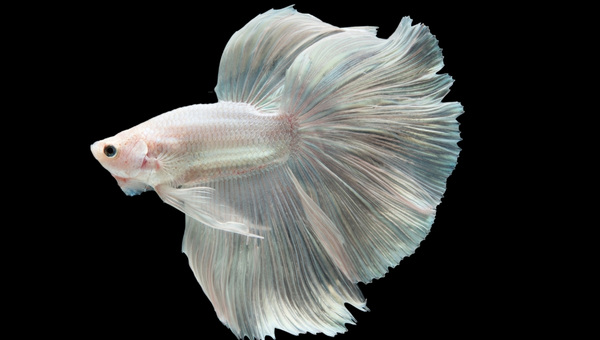
The fins of the Halfmoon Betta are also long and flowing, and the fish has a slender, torpedo-shaped body. Halfmoon Bettas are available in various colors, including blue, green, orange, red, yellow, and purple.
These fish are native to Southeast Asia and can be found in inland waterways and rice paddies. Halfmoon Bettas are relatively peaceful but can be aggressive toward other fish if they feel threatened.
The cost of a Halfmoon Betta varies depending on the fish’s color and pattern but typically ranges from $10 to $30. But, if you’re looking for a Halfmoon Betta with particularly long fins, you may have to pay $100 or more.
Halfmoon Bettas Size & Growth Rate
The size of a Halfmoon Betta varies depending on the fish’s age, but adults typically reach a length of 2.5 inches, not including the length of the tail.
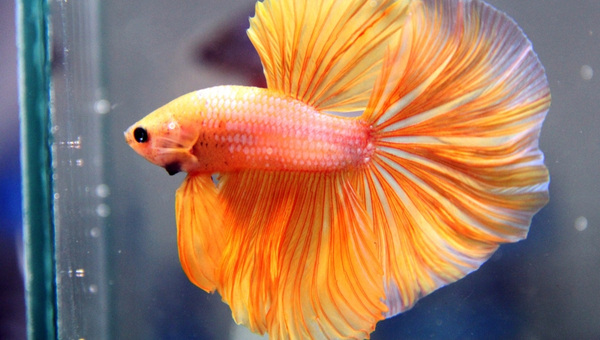
The growth rate of a Halfmoon Betta is relatively slow, and the fish typically reaches its full size within 6 to 8 months. However, some Halfmoon Bettas may continue to grow and develop new fins and colors for up to 2 years.
Halfmoon Bettas Lifespan
The lifespan of a Halfmoon Betta is typically 3 years in captivity, but these fish can live for up to 5 years in the wild.
However, the lifespan of a Halfmoon Betta can be shortened by poor water quality, inadequate diet, and other factors.
Halfmoon Bettas Appearance
These species’ shiny colors result from layers of pigment cells called iridophores and chromatophores. Underneath these cells is a layer of white tissue, reflecting light and making the colors appear even more vibrant.
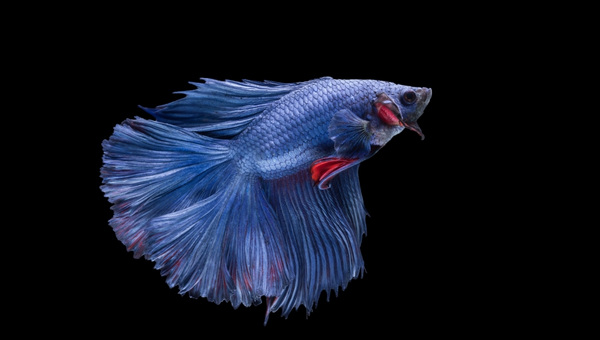
These fish can also have patterns of stripes or spots on their bodies and fins. The most common color pattern for Halfmoon Bettas is a solid color with a contrasting stripe down the center of the body.
As we told you above, this fish is named for its distinctive tail shape, but they also have long fins on their bodies and faces. The fins of the Halfmoon Betta are made up of thin layers of skin called membranes, supported by bony rays.
The fins of the Halfmoon Betta can be divided into three main types: the caudal fin, the dorsal fin, and the anal fin. The caudal fin is the fish’s tail and is responsible for propelling the fish through the water. The dorsal fin is located on the fish’s back and helps the fish to stay balanced in the water.
The anal fin is located on the fish’s belly and helps to control the fish’s movement. The head of the Halfmoon Betta is small and round, with a pointed nose. These fish have large eyes that are set far apart on their heads.
The mouths of Halfmoon Bettas are small and downturned, which helps to prevent food from escaping. These fish have long, slender bodies that taper towards the tail.
The males of the species generally have longer fins and brighter colors than the females. Male Halfmoon Bettas also have a small protrusion on their heads called a gonopodium, which is used to deliver sperm to the female during breeding.
The females of the species are typically smaller than the males and have shorter fins. Females also do not have a gonopodium, but a small opening called a vent is used to release eggs during breeding.
Halfmoon Betta Behavior & Temperament
The male Halfmoon Betta is a very aggressive fish, often fighting with other male bettas. They are also known to be territorial, and they will defend their territory against other fish.
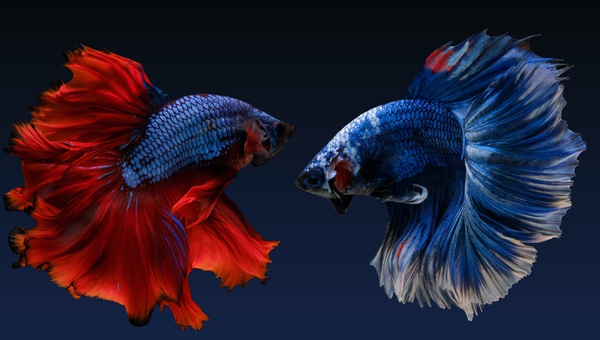
The female Halfmoon Betta is not as aggressive as the male, but they can still be territorial.
They are known to be very active fish and often swim around their tank. They are also known to be curious, and they will often investigate their surroundings.
They are often seen as solitary fish but can live in groups. However, it is essential to note that they will often fight with other bettas if kept in the same tank.
If your Halfmoon Betta holds his fins close to his body, this signifies he is feeling threatened. You should try to remove any aggressors from the tank to reduce the stress on your fish.
The Halfmoon Betta can sometimes change its color to match its surroundings. However, this is not common and is thought to be caused by stress.
Halfmoon Bettas Breeding
Halfmoon Bettas are easy to breed and often spawn in community tanks. To breed Halfmoon Bettas, you must set up a breeding tank. The breeding tank should be at least 10 gallons, and it should have a sponge filter.
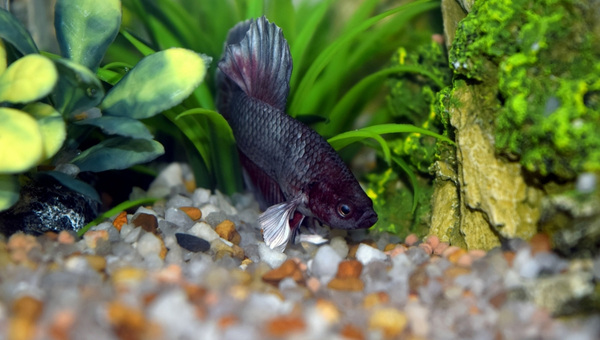
You should add plants to the breeding tank for the fry to hide in. Java moss is a good plant to use.
To induce spawning, you should raise the temperature of the breeding tank to 86 degrees Fahrenheit. You should add a male and a female Halfmoon Betta to the tank.
The female will lay her eggs on a plant, and the male will fertilize them. The fry will hatch in three to five days and free-swimming after seven to 10 days.
You should feed the live fry food, such as brine shrimp and bloodworms. You should also add plants to the tank for the fry to hide in.
After eight weeks, the fry will be mature enough to breed.
Halfmoon Betta Care
The Halfmoon Betta is not a particularly difficult fish to care for, but there are some essential things that you need to know to keep your fish healthy and happy.
One of the most important things to remember when caring for a Halfmoon Betta is never to house two males together. Male Halfmoon Bettas are very territorial and will often fight with each other to death.
If you want to keep more than one Halfmoon Betta, you will need to purchase a group of at least six fish and house them in an aquarium.
It is also important to remember that they are not good swimmers, and they will tire easily if they are kept in an aquarium with too much water movement. For this reason, it is best to use a low flow rate or turn the flow rate down on your existing filter.
They also prefer to live in warm water. If you live in a cold climate, you may need to use an aquarium heater to keep the water warm enough for your fish.
Another essential thing to remember when caring for Halfmoon Bettas is that they are surface-dwelling fish that need air. For this reason, it is essential to ensure at least two inches of space between the water surface and the top of the aquarium.
You should also be sure to provide your Halfmoon Betta with plenty of hiding places, as these fish like to have a place to retreat when they feel stressed. Driftwood, live plants, and caves can all be used to create hiding places for your fish.
Their diet is not particularly complicated, but there are a few things you need to keep in mind to keep your fish healthy. These fish are carnivores, and their diet should consist mostly of live or frozen foods.
Here we will discuss everything you need to know about them, from their tank size and water parameters to their diet and care.
Tank Size
They are relatively small fish and should be kept in a tank that is at least 5 gallons in size. These fish are not very active, so they do not need much swimming space.
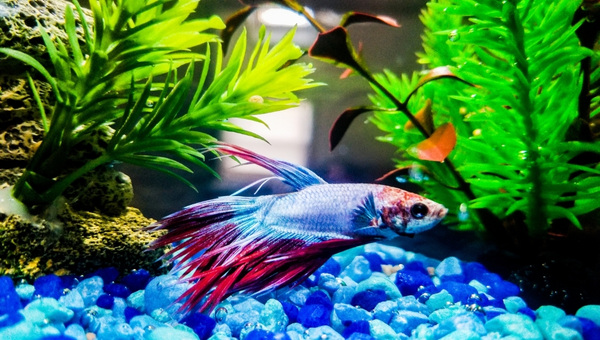
However, it is essential to remember that Halfmoon Bettas are surface-dwelling fish, and they need to be able to breathe air. They also have long fins that can easily be damaged, so it is essential to ensure enough space in the tank for the fish to move around without damaging their fins.
Water Parameters
They are tropical fish, and they prefer warm water. The ideal temperature range for these fish is 72°-81°F. The ph range that is best for Halfmoon Bettas is 7.0-8.0.
The water hardness for Halfmoon Bettas should be in the range of 5-15 dH.
These fish are also fairly sensitive to water quality, so keeping the water in their tank clean is essential. The best way to do this is to perform a weekly water change of at least 25%.
Filtration
As we mentioned earlier, Halfmoon Bettas are not good swimmers, and they will tire quickly if they are kept in an aquarium with too much water movement. For this reason, it is best to use a low flow rate or turn the flow rate down on your existing filter.
A good filter for a Halfmoon Betta tank has a flow rate of not more than 5 gallons per hour.
Some recommended filters for Halfmoon Betta tanks are:
- The Aqua Clear 20 Power Filter: This filter has a flow rate of up to 5 gallons per hour and is designed for tanks up to 20 gallons in size.
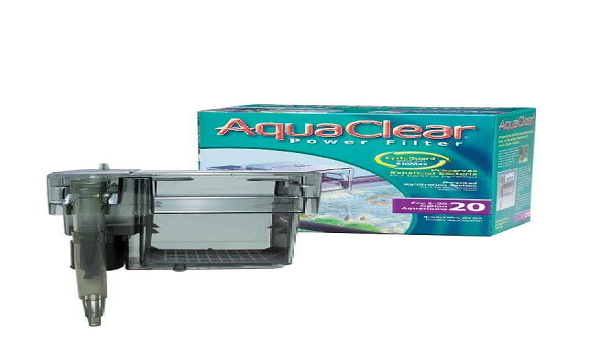
- The Penn-Plax Cascade 1000 Canister Filter: This filter has a flow rate of 4 gallons per minute, and it is designed for tanks up to 100 gallons in size.
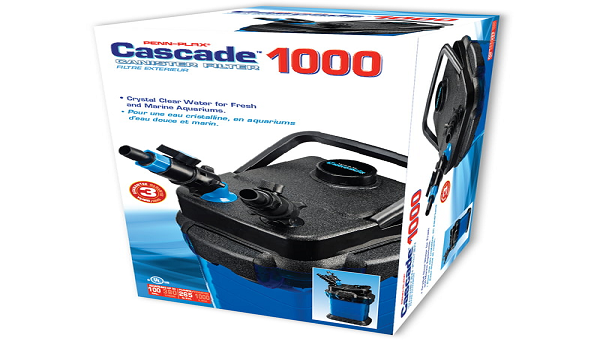
- The Fluval 10531 Canister Filter: This filter has a flow rate of 6.6 gallons per minute, and it is designed for tanks up to 100 gallons in size.
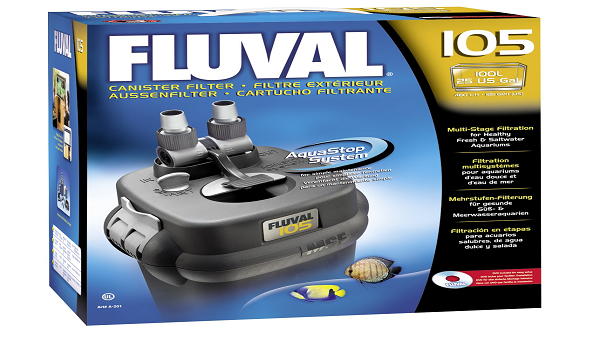
Heating
As mentioned earlier, Halfmoon Bettas prefer warm water, and the ideal temperature range for these fish is 72°-81°F.
Some recommended aquarium heaters for Halfmoon Betta tanks are:
- The Fluval Eheim Jager Aquarium Heater: This heater is designed for tanks up to 60 gallons in size and has a temperature range of 68°-88°F.
- The Tetra HT Submersible Aquarium Heater: This heater is designed for tanks up to 100 gallons in size and has a temperature range of 74°-84°F.
- The Aquatop GHG-600 Submersible Glass Aquarium Heater: This heater is designed for tanks up to 100 gallons in size and has a temperature range of 68°-92°F.
Plants
Halfmoon Bettas are not particularly picky regarding plants and will do well in an aquarium with various plants.
Some recommended plants for Halfmoon Betta tanks are:
- Java fern (Microsorum Pteropus): This plant is a good choice for Halfmoon Betta tanks because it does not require special care and can tolerate a wide range of water conditions.
- Anacharis (Egeria densa): This plant is a good choice for Halfmoon Betta tanks because it can help oxygenate the water and provide shelter for the fish.
- Java moss (Vesicularia dubyana): This plant is another good choice for Halfmoon Betta tanks because it is effortless to care for and can tolerate a wide range of water conditions.
- Cabomba (Cabomba caroliniana): This plant is a good choice for Halfmoon Betta tanks because it provides shelter for the fish and can help oxygenate the water.
Lighting
Halfmoon Bettas do not require special lighting and will do well in an aquarium with a standard fluorescent light fixture.
You must use a plant-specific fluorescent bulb to grow plants in your Halfmoon Betta tank.
Some recommended plant-specific bulbs for Halfmoon Betta tanks are:
- The Zoo Med Aquarium Plant Bulb: This bulb is designed for aquariums up to 20 gallons in size, and it has a color temperature of 6500K.
- The Current USA Sunpaq Aqua-Glo Fluorescent Bulb: This bulb is designed for aquariums up to 50 gallons in size, and it has a color temperature of 6500K.
- The Marineland Double Bright LED Light: This light is designed for aquariums up to 50 gallons in size and has a color temperature of 10000K.
Co2 Systems
If you want to grow plants in your Halfmoon Betta tank, you may need to use a Co2 system. A Co2 system can help to improve the growth of plants, and it can also help to prevent algae growth.
Some recommended Co2 systems for Halfmoon Betta tanks are:
- The AquaVista 500 Aquarium Co2 System: This system is designed for aquariums up to 50 gallons in size, and it comes with everything you need to get started.
- The AquaVista 1000 Aquarium Co2 System: This system is designed for aquariums up to 100 gallons in size, and it comes with everything you need to get started.
Fertilizers
You may need fertilizer to grow plants in your Halfmoon Betta tank.
Fertilizers can help to improve the growth of plants, and they can also help to prevent algae growth.
Some recommended fertilizers for Halfmoon Betta tanks are:
- The Seachem Flourish Tabs: These are designed for up to 60 gallons of aquariums and can be used to fertilize plants.
- The API Leaf Zone Plant Food: This food is designed for up to 100 gallons of aquariums and can be used to fertilize plants.
Water Conditioners
Water conditioners are not required for Halfmoon Bettas, but they can be used to make the water safer for the fish.
Some recommended water conditioners for Halfmoon Betta tanks are:
- The Seachem Prime Water Conditioner: This conditioner is designed for up to 100 gallons of aquariums, and it can be used to remove chlorine and ammonia from the water.
- The API Stress Coat Water Conditioner: This conditioner is a good choice for Halfmoon Betta tanks because it can help to remove chlorine and ammonia from the water, and it can also help to relieve stress in the fish.
- The API Stress Zyme Water Conditioner: This conditioner is designed for aquariums up to 60 gallons in size, and it can be used to break down waste and remove toxins from the water.
Substrate
The substrate is not required for Halfmoon Bettas, but it can be used to provide a natural environment for the fish.
Some recommended substrates for Halfmoon Betta tanks are:
- The Fluval Plant and Shrimp Stratum: This substrate is designed for aquariums up to 30 gallons in size, and it can help improve plants’ growth.
- The Seachem Flourish Tabs: These are designed for up to 60 gallons of aquariums and can be used to fertilize plants.
- The API Leaf Zone Plant Food: This food is designed for up to 100 gallons of aquariums and can be used to fertilize plants.
Decorations
Decorations are not required for Halfmoon Bettas, but they can be used to provide a natural environment for the fish.
Some recommended decorations for Halfmoon Betta tanks are:
- The Zoo Med Aquatic Decor Natural Driftwood: This driftwood is safe for aquariums and can provide a natural environment for the fish.
- The Penn Plax Aquarium Decor Rock Cave: This cave is safe for aquariums and can provide a hiding place for the fish.
- The Marina Decor Mangrove Root: This root is safe for aquariums and can provide a natural environment for the fish.
Other Tank Accessories
There are a few other things that you will need for your Halfmoon Betta tank, and these include:
- Air Pump: An air pump is essential for Halfmoon Betta tanks because it can help keep the water oxygenated.
- pH Meter: A pH meter is essential for Halfmoon Betta tanks because it can help keep the water at the correct pH level.
- Water Thermometer: A water thermometer is essential for Halfmoon Betta tanks because it can help keep the water at the correct temperature.
Water Changes
Water changes are essential for aquariums and should be done regularly. For Halfmoon Betta tanks, it is recommended to do a water change of 10-15% every week.
To change the water, you will need
- A siphon: A siphon can remove water from the tank.
- A bucket: A bucket can hold the water you remove from the tank.
- Freshwater: You will need fresh water to replace the water you remove from the tank.
The steps for changing the water are as follows:
- Use the siphon to remove 10-15% water from the tank.
- Fill the bucket with fresh water.
- Add the fresh water to the tank.
- Repeat these steps every week.
You must remove the fish from the tank and put them in a temporary home during a water change. After the water changes, you can put the fish back into the tank. It is also essential to clean the filter during a water change. The frequency of filter cleaning will depend on the type of filter that you have.
Cleaning The Tank
It is essential to clean the Halfmoon Betta tank regularly, and the frequency of cleaning will depend on the size of the tank. For example, a 10-gallon tank should be cleaned every two weeks, and a 20-gallon tank should be cleaned every four weeks.
To clean the tank, you will need the following:
- A sponge: A sponge can be used to wipe down the inside of the tank.
- A toothbrush: A toothbrush can be used to clean the filter.
- Freshwater: You will need fresh water to rinse off the sponge and toothbrush.
The steps for cleaning the tank are as follows:
- Remove the fish from the tank and put them in a temporary home.
- Remove all of the decorations from the tank.
- Use the sponge to wipe down the inside of the tank.
- Rinse the sponge and toothbrush with fresh water.
- Use the toothbrush to clean the filter.
- Rinse the sponge and toothbrush with fresh water.
- Add the decorations back to the tank.
- Add the fish back to the tank.
It is essential to clean the tank regularly to prevent the build-up of algae and bacteria. Algae and bacteria can be harmful to fish, and they can also cause the water to become cloudy.
Cleaning The Filter
It is essential to clean the filter regularly, and the frequency of cleaning will depend on your filter type. For example, a sponge filter should be cleaned every two weeks, and a cartridge filter should be cleaned every four weeks.
To clean the filter, you will need the following:
- A toothbrush: A toothbrush can be used to clean the filter.
- Freshwater: You will need fresh water to rinse off the toothbrush.
The steps for cleaning the filter are as follows:
- Remove the filter from the tank.
- Use the toothbrush to clean the filter.
- Rinse the toothbrush with fresh water.
- Put the filter back in the tank.
It is essential to clean the filter regularly to prevent the build-up of algae and bacteria. Algae and bacteria can be harmful to fish, and they can also cause the water to become cloudy.
Testing The Water
It is essential to test the water regularly; the testing frequency will depend on the tank size.
To test the water, you will need the following:
A test kit: A test kit can test the water for ammonia, nitrites, and nitrates.
The steps for testing the water are as follows:
- Remove the fish from the tank and put them in a temporary home.
- Test the water for ammonia, nitrites, and nitrates.
- If the ammonia, nitrites, or nitrates are too high, you will need to do a water change.
- Add the fish back to the tank.
It is essential to test the water regularly to ensure that the levels of ammonia, nitrites, and nitrates are safe for fish. Ammonia, nitrites, and nitrates can be harmful to fish, and they can also cause the water to become cloudy.
Common Possible Diseases
There are a few diseases that Halfmoon Bettas are susceptible to, and these diseases can be fatal if they are not treated.
The most common diseases are:
- Fin Rot: Fin rot is a bacterial infection that causes the fins to become ragged and disintegrate. If left untreated, fin rot can be fatal.
- Dropsy: Dropsy is a disease that causes the fish to bloat and the scales to protrude. If left untreated, dropsy can be fatal.
- Columnaris: Columnaris is a bacterial infection that causes the skin to become mushy and disintegrate. If left untreated, columnaris can be fatal.
Signs That Your Halfmoon Betta Is Sick
There are a few signs that you can look for that will indicate that your Halfmoon Betta is sick.
These signs include:
- Loss of appetite
- Lethargy
- Gasping for air
- Floating at the surface of the water
- Clamped fins
- Red streaks on the body
- White spots on the body
If you notice these signs, you should treat your fish to a veterinarian.
Preventing Diseases
There are a few things that you can do to prevent disease in Halfmoon Bettas.
The most important thing is to keep the tank clean and avoid overfeeding your fish.
You should also quarantine new fish for at least two weeks before adding them to the tank. This will allow you to observe them for any signs of disease.
Treatment And Medications Of Diseases
If you notice any disease in your fish, you should take them to a veterinarian for treatment. The veterinarian will be able to prescribe the appropriate medication for the disease.
A few common medications are used to treat diseases in Halfmoon Bettas.
These medications are:
- Antibiotics: Antibiotics are used to treat bacterial infections.
- Fungicides: Fungicides are used to treat fungal infections.
- Virucides: Virucides are used to treat viral infections.
You should only use medications specifically designed for fish, and you should never use human medications. Human medications can be harmful to fish, and they can also cause the water to become polluted.
How To Choose A Healthy Halfmoon Betta
When you are choosing a Halfmoon Betta, there are a few things that you should look for to ensure that you are choosing a healthy fish.
These things include:
- Clear eyes
- Smooth scales
- Fins that are not torn
- A healthy appetite
You should also avoid fish that have any visible signs of disease. If you are unsure about the health of the fish, you should ask a vet or a pet store employee for advice.
Halfmoon Betta Food & Diet
The Halfmoon Betta is a carnivorous fish, and its diet should consist mainly of protein. Therefore it will be necessary to supplement their diet with live foods, such as brine shrimp or bloodworms. You can also feed them freeze-dried or frozen foods, but you should ensure that they are high in protein.
Halfmoon Bettas eat insects, larvae, and small crustaceans in the wild. You should try to replicate their natural diet as much as possible.
You can give them pellets or flakes for snacks, but these should not be their main food source.
They also like to eat live plants, so you can add some plants to their tank for them to munch on. However, you should be careful not to add too many plants, as this can cause the water to become polluted.
Diet Foods To Avoid
There are a few diet foods that you should avoid feeding your Halfmoon Betta.
These foods include:
- Peas: Peas can cause bloating and constipation in fish.
- Lettuce: Lettuce has very little nutritional value for fish.
- Fruit: Fruit can cause digestive problems in fish.
Feeding Schedule
You should feed your Halfmoon Betta two or three times a day. They can be provided more often, which can cause them to become overweight.
You should only give them as much food as they can eat in two minutes. Any uneaten food should be removed from the tank.
Also, you should not feed them more than they can eat, as this can pollute the water.
Halfmoon Betta Tank Mates
The male Halfmoon Betta tends to have an aggressive temperament, often fighting with other male bettas. For this reason, it is best to keep them alone.
The female Halfmoon Betta is not as aggressive as the male, but they can still be territorial. For this reason, keeping them with other peaceful fish is best.
Some good tank mates for the Halfmoon Betta include:
- Cory Catfish
- Ghost Shrimp
- Guppies
- Kuhli Loaches
- Mollies
- Platies
- Tetras
It is important to note that the Halfmoon Betta can be aggressive towards other fish and may try to eat smaller fish. Therefore, it is best to avoid keeping them with tiny fish.
Fish To Avoid
These fish are known to be aggressive towards the Halfmoon Betta and may try to eat them.
Advantages Of Having Halfmoon Betta In Your Tank
The first advantage is that they are very beautiful fish. They have long fins that can grow up to 6 inches and come in various colors.
Another advantage is that they are very active fish. They are often seen swimming around their tank, and they are also known to be curious.
A third advantage is that they are easy to breed. They often spawn in community tanks, and the fry is easy to care for.
Disadvantages Of Having Halfmoon Betta In Your Tank
The first disadvantage is that they can be aggressive. The male Halfmoon Betta is particularly aggressive, often fighting with other fish.
Another disadvantage is that they are not good tank mates for other fish. The Halfmoon Betta can be aggressive towards other fish, and they may try to eat them.
A third disadvantage is that they are fin nippers. The Halfmoon Betta is known to nibble on the fins of other fish, and this can cause stress and injury.
Wrapping Up
As you can see, the Halfmoon Betta is a beautiful but aggressive fish. They are best kept alone and not good tank mates for other fish. If you decide to keep them in your tank, you should be prepared for some aggression.
But, overall, the Halfmoon Betta is a beautiful fish that is easy to breed. They are active and curious and make a great addition to any tank.
I hope you have enjoyed this article, and I hope it has given you some information on the Halfmoon Betta. Thanks for reading!



